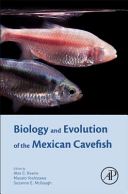

Most ebook files are in PDF format, so you can easily read them using various software such as Foxit Reader or directly on the Google Chrome browser.
Some ebook files are released by publishers in other formats such as .awz, .mobi, .epub, .fb2, etc. You may need to install specific software to read these formats on mobile/PC, such as Calibre.
Please read the tutorial at this link: https://ebookbell.com/faq
We offer FREE conversion to the popular formats you request; however, this may take some time. Therefore, right after payment, please email us, and we will try to provide the service as quickly as possible.
For some exceptional file formats or broken links (if any), please refrain from opening any disputes. Instead, email us first, and we will try to assist within a maximum of 6 hours.
EbookBell Team

4.3
88 reviewsBiology and Evolution of the Mexican Cavefish features contributions by leading researchers in a comprehensive, unique work that examines a number of distinct areas of biology ― evolution, development, ecology, and behavior ― using the Mexican cavefish as a powerful model system to further understanding of basic biological processes such as eye degeneration, hearing, craniofacial development, sleep, and metabolic function.
These fish are currently being used to better understand a number of issues related to human health, including age-related blindness, sleep, obesity, mood-related disorders, and aging. The recent sequencing of the cavefish genome broadens the interest of this system to groups working with diverse biological systems, and has helped researchers identify genes that regulate sleep, eye degeneration, and metabolic function.
Mexican cavefish are particularly powerful for the study of biological processes because these fish evolved independently in twenty-nine caves in the Sierra de el Abra Region of Northeast Mexico. These fish have dramatic adaptations to the cave environment, and this can be used to identify genes involved in disease-related traits.
This scholarly text will be of interest to researchers and students throughout diverse areas of biology and ecology. It includes photographs of animals and behavior in laboratory and natural settings that will also increase interest and accessibility to non-experts.